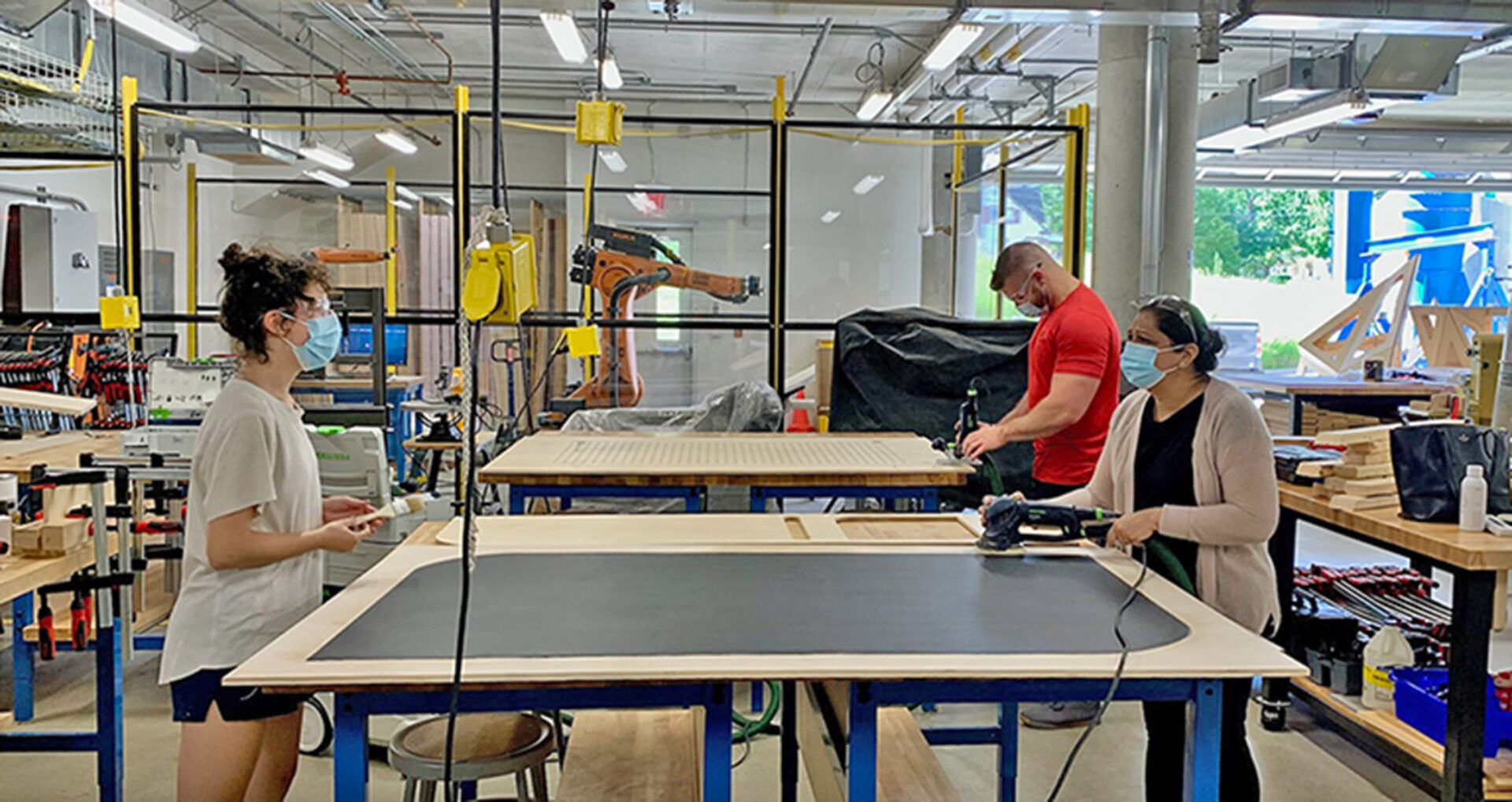A key component of human-centered design is empathy; it allows for us to create spaces that truly have the best interests of the users in mind. Without it, we would not be able to design spaces that are equitable, or that improve the occupants’ quality of life. Assistant Professor of Interior Design, in the College of Architecture and Environmental Design, at Kent State University, Tina Patel, centers empathy in her approach to design education. Encouraging students to consider realities and experiences divergent from their own, Patel’s classroom is a space where they can explore a deeper connection between the human condition and the built environment. For her important work as, and approach to being an educator, the IIDA Foundation, in partnership with Interior Design Educators Council Foundation (IDECF), is pleased to present the 2022 IIDA Educator Diversity Award.

Tina Patel
Assistant Professor of Interior Design, Kent State University
Patel, was nominated by 2021 IIDA Educator Diversity Award winner, Associate Professor and Director of the School of Interior Architecture at the University of Tennessee Knoxville, and colleague Milagros Zingoni Phielipp, IIDA, ASID, AIA, for her leadership and focus on elevating the quality and experience of design education. “She has a unique and purposeful focus on spatial human experience, community engagement, and the designer’s responsibility to well-being, human rights, and empathy,” says Zingoni Phielipp. “Her studios expose students of all age groups to designing with empathy with a special focus on neurodivergent users.”
Having studied and worked across India, the U.S., and Canada, Patel carries a deep understanding of the range of inequities that designers will come across in their careers, and how the role of interior designers can empower and educate underserved communities. “She introduced me to a creative world of progressive design that changes lives, breaks barriers, and focuses on elevating the stories of less affluent communities,” explained student Allison Baker of Kent State University. “She shared with us her passion for inclusion, not just in words, but through her everyday actions and thoughtful curriculum.”

“Tina represents what an interior designer should be: a role model, educator, student, activist, and an inclusive leader. She isn’t afraid to be human in a perfectionistic profession, which only conveys her empathetic approach to design more clearly and makes her relatable and easy to confide in,” Baker continues. “She impacts everything she touches. Ask any of my peers and they will tell you: she breaks preconceived limits, shines light on silenced voices, shifts mindsets, and grounds individuals in their calling.”
Students, colleagues, and community members describe Patel’s impact to be something revolutionary for how they approach design. Through the introduction of mixed-method research and critical thinking to design projects, students are exposed to a deeper understanding about what it means to design interior and built environments. She dedicates her research to creating inclusive environments for neurodivergent individuals and is influenced by the idea that interior design typically caters to the wealthy, able-bodied male leaving out the majority of people. Patel’s former student Sombre Carleton reflects that “she aims to understand that 90% better.”

Working with her in her community-based studio with an autism learning center project, Carleton participated in the process of interviewing clients from an autism learning center, creating empathy maps, listening to parents of children with autism, meeting with autism specialists, conducting literature reviews, and reviewing autism-related projects with practitioners. Of the process, he affirms, “This was an enlightening project because we had to consider how all the senses, not just sight, affect people.”
Nominating educator Zingoni Phielipp concludes “She has made every effort to expand the ethical borders of the discipline of interior architecture as we know it. If the mission of an educator, in this case, an interior design educator, is to create global citizens, complete human beings that are critical thinkers and have curious minds, then we need leaders who embody the values of that ideal. Tina Patel is that leader and educator.”
